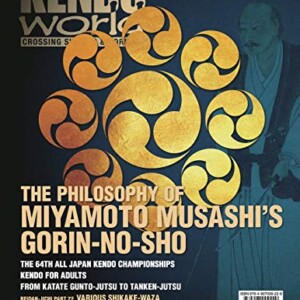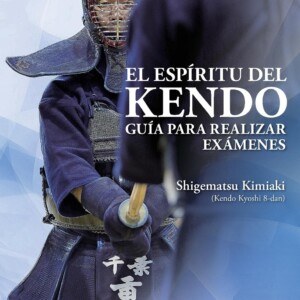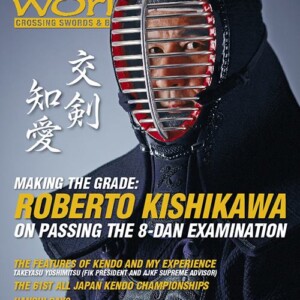
Kendo: Fundamentals and Waza to Win

By Hirakawa Nobuo
Originally published in Japanese in 1993, Hirakawa-sensei’s book has been a consistent best seller and has been through several editions.
The book starts with a brief history of kendo and its current state before focusing on the basics in Chapter 2. Hirakawa-sensei provides guidance on how to stand, move, swing the shinai (bamboo sword), put on bogu (protective armour), as well as basic strikes and defensive moves.
Chapter 3 delves deeply into shikake-waza (off-the-mark techniques) and oji-waza (applied techniques). The shikake-waza section covers techniques such as taiatari-waza, katsugi–waza, and creating striking opportunities through body movement and using the shinai tip. Nuki-waza, suriage-waza, harai-waza, maki-waza, and many more technique categories are covered in the applied techniques section before finishing with jodan-waza.
There is also an explanation of the Nippon Kendo Kata using a bokuto (wooden sword), as well as practicing the forms while wearing bogu.
Throughout the book, each technique is explained in detail and illustrated with diagrams and photos to help your understanding.
Kendo–Fundamentals and Waza to Win is the most detailed instruction guide available in English and is essential reading for both novice and expert practitioners.
AVAILABLE IN PRINT FORMAT! SEE THE LINK BELOW!!
Contents
Foreword
The Concept of Kendo & The Purpose of Practicing Kendo
Chapter 1: The Outline of Kendo
Kendo—Its History and Current State
Kendo’s Characteristics
Types of Kendo Keiko
Chapter 2: Basic Skills
Section 1: Correct Posture and Bowing
Shizentai—natural posture
Rei—courtesy and etiqutte, bowing
Kamae and osame—en garde and sheathing the shinai
Ashi-sabaki—footwork
Suburi—how to swing the shinai
How to wear bogu—protective armour
How to store bogu
Section 2: Basic Strikes (uchi) and Thrusts (tsuki)
How to strike men
How to strike kote
How to strike doh
How to tsuki
Section 3: Basic Defence
Defending against a men strike
Defending against a right-kote strike
Defending against a right-doh strike
Defending against tsuki
Section 4: Kirikaeshi (uchikaeshi)
How to perform kirikaeshi (uchikaeshi)
How to receive kirikaeshi
Applied practice
Chapter 3: Applied Techniques
Section 1: Shikake-waza
Creating an opening with the shinai tip
Creating openings through body movement
Creating a debana striking opportunity
Creating an opening by suppressing the opponent’s shinai and taking the centreline
Creating an opening with ni / san-dan renzoku-waza (continuous strikes)
Taiatari-waza—body-checking
Tsubazeri-waza (hiki-waza)
Katsugi-waza
Katate-waza—one-handed techniques
Tobikomi-waza
Section 2: Kaeshi-waza
Nuki-waza
Amashi-waza
Uchiotoshi-waza
Suriage-waza
Harai-waza
Osae-waza
Hari-waza
Maki-waza
Oji-kaeshi-waza
Section 3: Jodan-waza
Katate-waza
Morote-waza
Waza for use against jodan opponents
Chapter 4: Kata





















No comments yet.